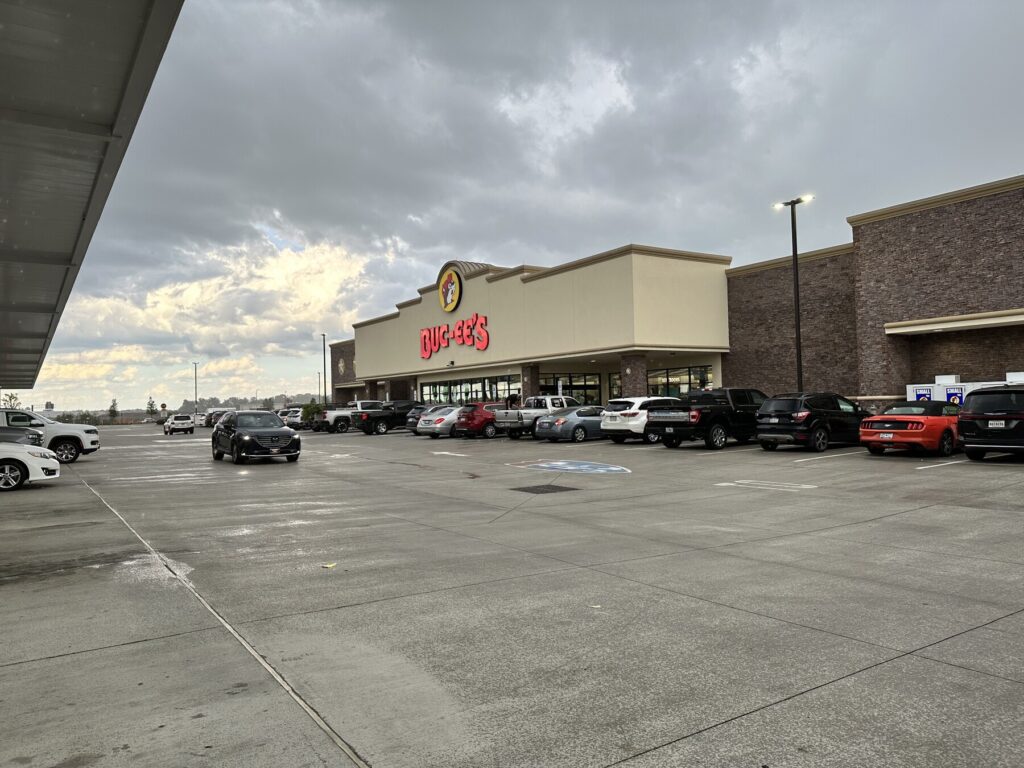Battlefield Visits, Epic Man Trip Edition – Part 1: The Drive to Charleston
From my travels, June 24, 2023.
With my wedding fast approaching, I wanted to do something of a last hurrah. Long time readers can probably guess that I’m not a “bachelor party” kind of guy, so an absolutely epic history nerd trip with my sons is just about the best thing I can imagine. I spent months researching the coolest things we could see and planning the optimal route to see them. We were going to visit some museum ships, explore 31 Civil War battlefields – many of which I had never seen, and perhaps complete as many as 9 Junior Ranger badges within a week. I was thrilled to get on the road with my guys at about 6:30am and head south.

Battle of Drewry’s Bluff – Civil War Battlefield #153
As part of the 1862 Peninsula Campaign, several Union warships – including the famous ironclad USS Monitor – went up the James River to attempt to shell Richmond. The flotilla did not make it past this bend in the river defended by Confederate batteries in Fort Darling on Drewry’s Bluff.
Corp. John F. Mackie was cited for his bravery serving aboard the ironclad gunboat USS Galena during the Battle of Drewry’s Bluff: “As enemy shellfire raked the deck of his ship, Corporal Mackie fearlessly maintained his musket fire against the rifle pits along the shore and, when ordered to fill vacancies at guns caused by men wounded and killed in action, manned the weapon with skill and courage.” He would receive the Medal of Honor for his actions here – the very first Marine to be so honored.
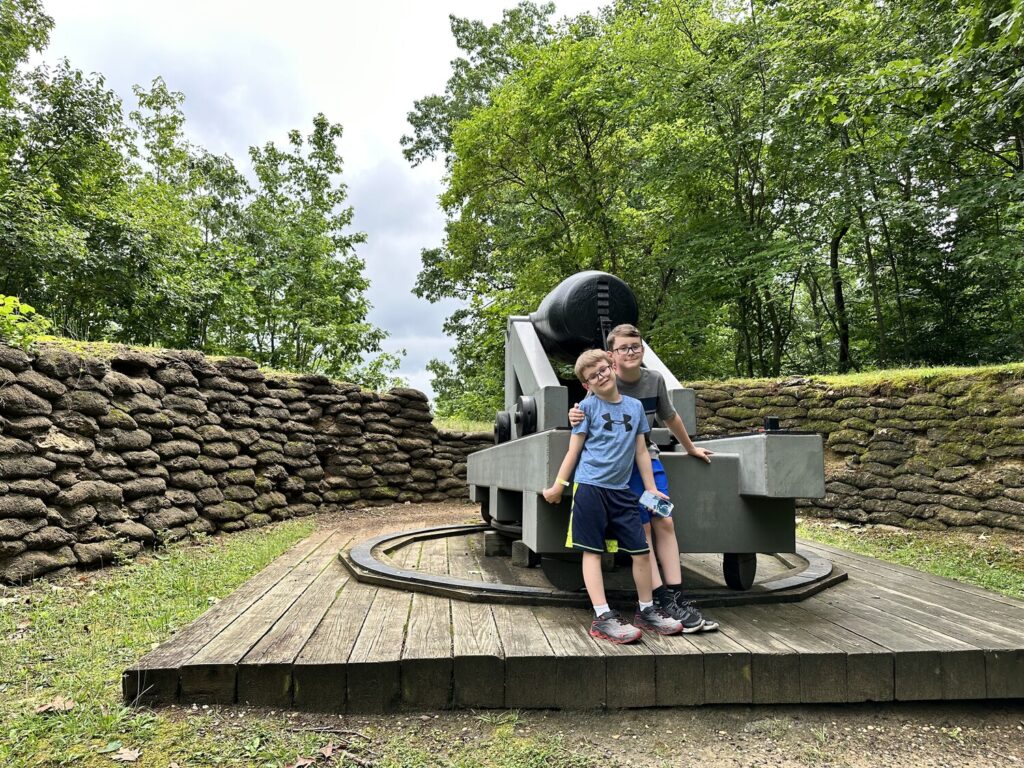
Today, the fort is preserved as part of Richmond National Battlefield Park, and is well-interpreted. They have a Columbiad and an observation platform with a view down the river. John was surprised to learn that earthwork forts were a thing – he thought that they were all masonry or stone. I guess we need to get out more! This was an excellent first stop for us.
Battle of Proctor’s Creek – Civil War Battlefield #154
Jumping to the spring of 1864 now, we join Maj. Gen. Benjamin “Beast” Butler in his half-hearted attack along the old Drewry’s Bluff defensive line. The Battle of Proctor’s Creek was the decisive battle of Butler’s minor Bermuda Hundred Campaign against Richmond’s railroads. We ended up visiting all five of the campaign’s actions, but out-of-order for road trip routing reasons.
While the Union forces met with some success here against Gen. P.G.T. Beauregard’s outnumbered Confederates, Butler didn’t press his advantage. When the weather degraded and the Confederates counterattacked, the Federals retreated back to their defenses at Bermuda Hundred.
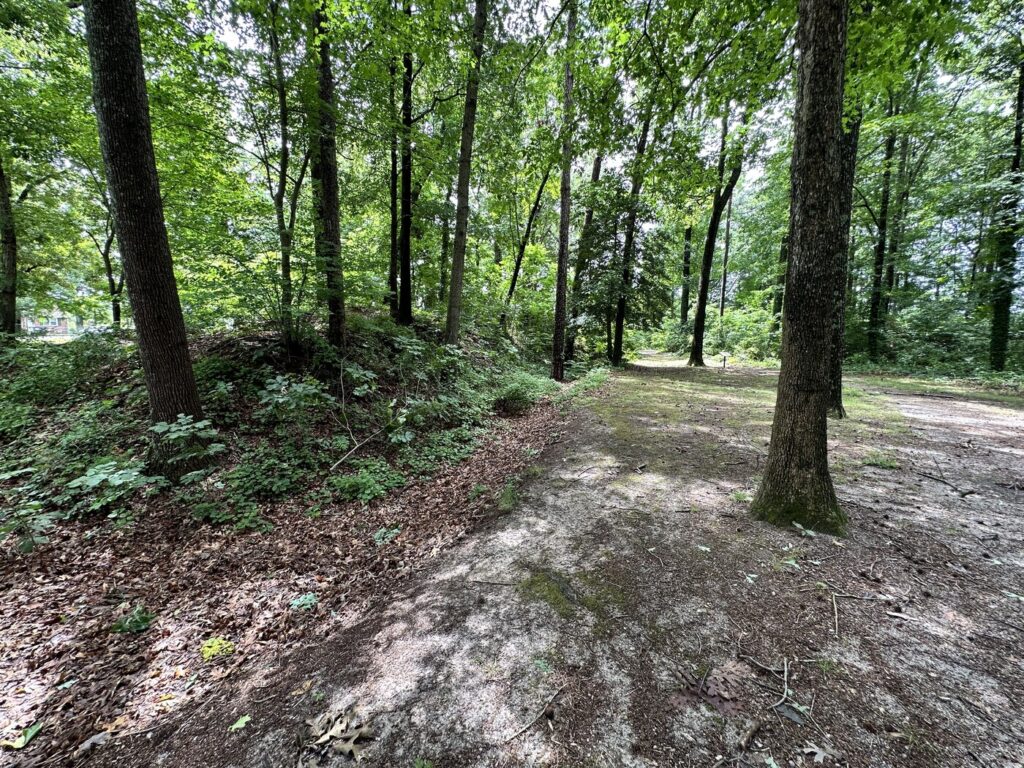
There is a very small – almost hidden – park surrounded by a neighborhood here that includes a few markers and the remains of the earthworks of Fort Stevens.
Battle of Chester Station – Civil War Battlefield #155
The Battle of Chester Station is another smaller battle from Butler’s Bermuda Hundred Campaign. A light Union force attempted a raid to destroy part of the Richmond & Petersburg Railroad, but was thwarted by a larger Confederate force here. Federal reinforcements came up, but neither side really let loose. The battle was a draw, with the Confederates moving back toward Drewry’s Bluff, and Union forces returning to the Bermuda Hundred line. Only minor damage was done to the railroad.
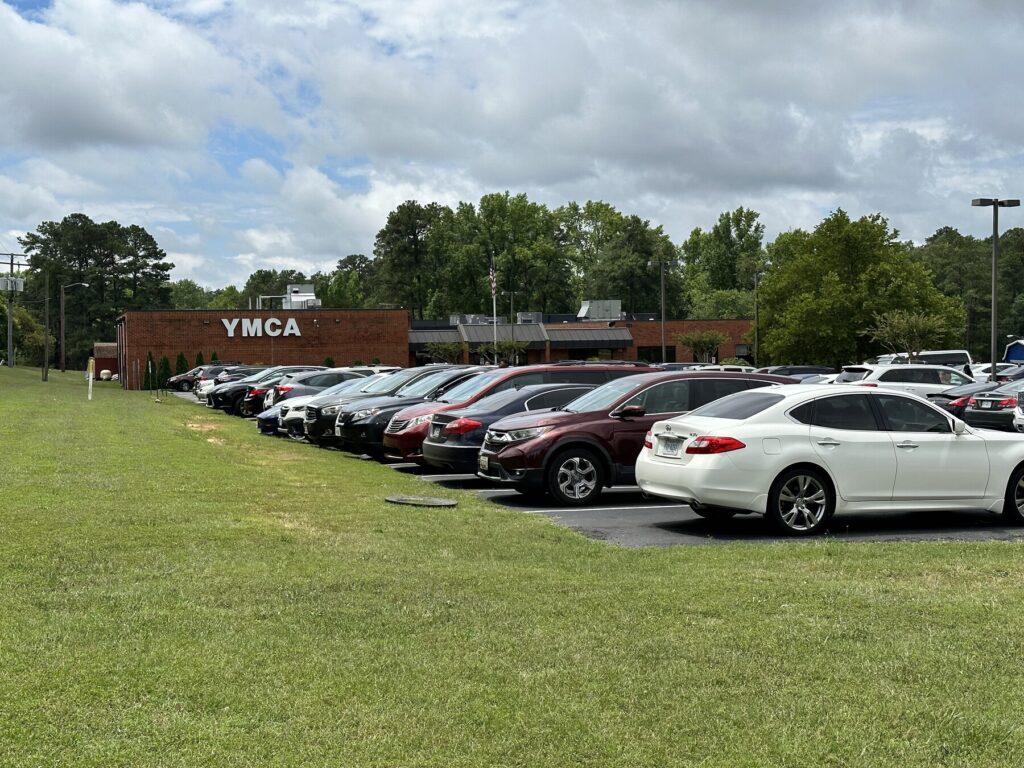
The wayside describing the battle is in really rough shape, but easy to find in front of the local YMCA. There isn’t much else left of this battlefield. My boys spent the rest of the trip calling it “The Battle of YMCA”.
Battle of Ware Bottom Church – Civil War Battlefield #156
Following their success at Proctor’s Creek (which we visited earlier today) P.G.T. Beauregard’s Confederates attacked Butler’s Bermuda Hundred defenses here, while beginning work on his own defensive works: The Howlett Line; sealing the Federal troops under Maj. Gen. Benjamin Butler on their small peninsula. The Union Army of the James wouldn’t be a threat to Richmond anymore.
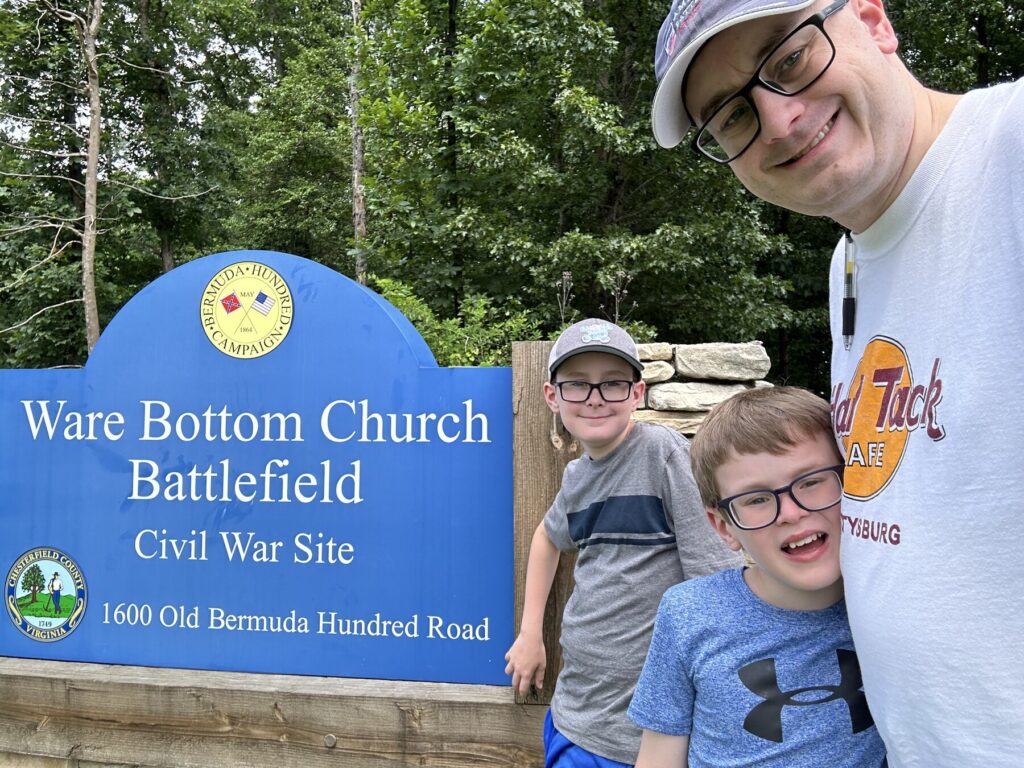
There are REALLY awesome earthworks at the Ware Bottom Church Battlefield Park that were part of the Confederate Howlett Line. We followed them back into the woods for a while. The boys really seemed interested in these old fortifications – much like they had been at Drewry’s Bluff earlier.
Battle of Port Walthall Junction – Civil War Battlefield #157
The opening battle of the Bermuda Hundred Campaign, Maj. Gen. Benjamin Butler’s troops were able to push aside Confederates here and disrupt the railroad operations at the junction. The rebels re-established their defense nearby at Swift Run Creek – which we’ll see next.
There are two markers for this battle along US-1, and that’s about it.
Battle of Swift Creek – Civil War Battlefield #158
Following their loss at Port Walthall Junction, Confederates under Brig. Gen. Bushrod Johnson attacked Butler’s Union troops here, but ultimately failed in the attempt, taking heavy casualties. Butler didn’t make a counterattack, instead settling for tearing up more railroad track. He would turn his Army of the James to the north to take on Richmond.
The boys and I have now seen all the battlefields of the Bermuda Hundred Campaign.
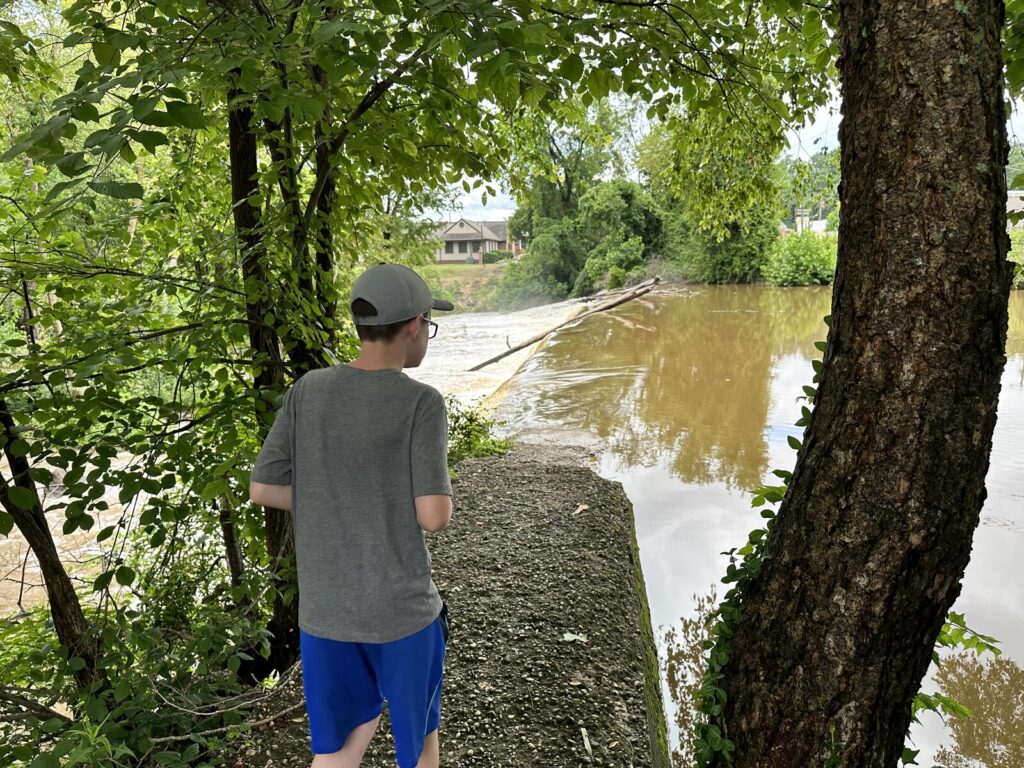
I love the old mill buildings (now a theatre) and the remains of the mill dam that are here. Very cool! John walked down to check them out with me.
First Battle of Ream’s Station – Civil War Battlefield #159
Even since before the days of I-95 (which the boys and I had mostly been traveling on) there have been major transportation routes running through this area south of Richmond. That’s the main reason there are so many battles that occurred here – Union forces were constantly trying to isolate Richmond by cutting off the railroads that supplied the Confederate capitol.
Here we see another example: During the Siege of Petersburg, Grant sent a cavalry force to raid along the South Side Railroad, and the Petersburg & Weldon Railroad. The two divisions of Union horsemen constituted what was later called the “Wilson-Kautz Raid“. On June 29, 1864 they converged on this station along the Petersburg & Weldon Railroad, hoping to destroy large sections of the tracks. Unfortunately, they were surrounded by Confederates and had to fight their way back to the Federal lines at Petersburg, doing only temporary damage to the infrastructure here in the process.
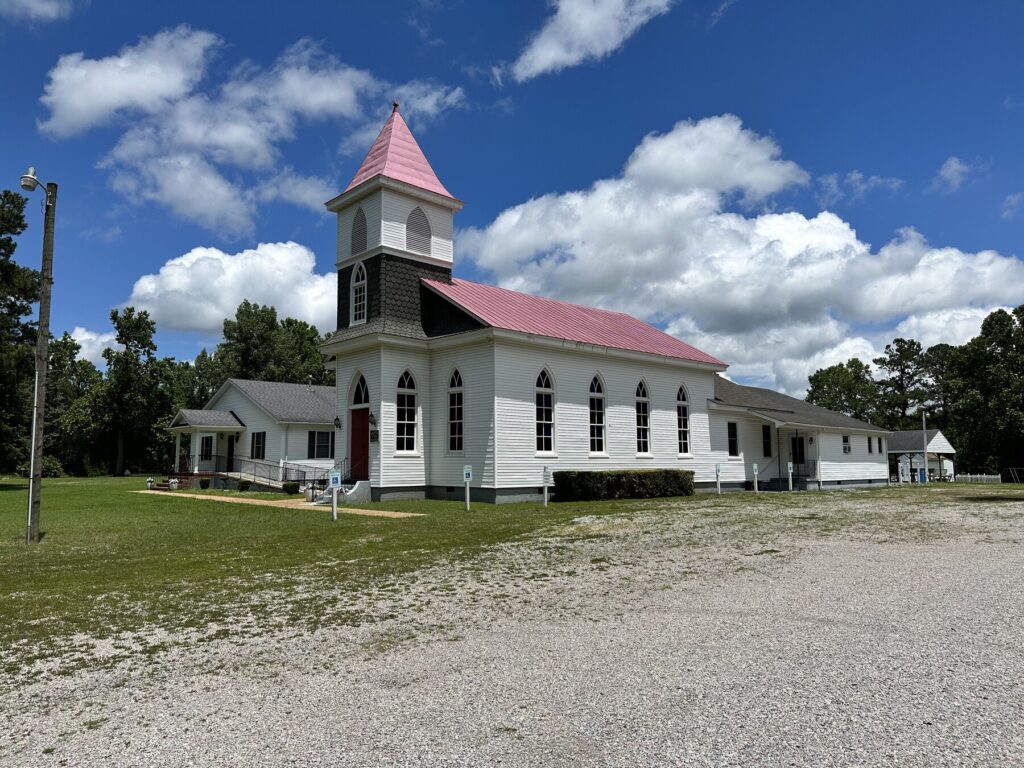
I hope it isn’t a spoiler that this action is known as the *First* Battle of Ream’s Station….
This battlefield was a little tricky to find at first. There is a Civil War Trails sign and a pair of waysides detailing the action here associated with the Wilson-Kautz Raid in the parking lot of the Oak Grove United Methodist Church.
Second Battle of Ream’s Station – Civil War Battlefield #160
Two months after the initial cavalry raid here, Union infantry under Maj. Gen. Winfield Scott Hancock arrived in this area as part of the push by Grant to encircle Petersburg. Hancock’s men succeeded in destroying some of the railroad, but Confederate reinforcements arrived and were able to outflank the Federals from the south, bringing on the Second Battle of Ream’s Station. Suddenly, some of the Union regiments panicked, and a gap opened in the line that rebels under Maj. Gen. Henry Heth exploited.
Hancock’s men were forced to retreat, yielding a tactical victory to the Heth in the process, but it became clear that the Confederates no longer controlled the Weldon Railroad north of this point. Only the South Side Railroad remained as a lifeline for Petersburg and Richmond.
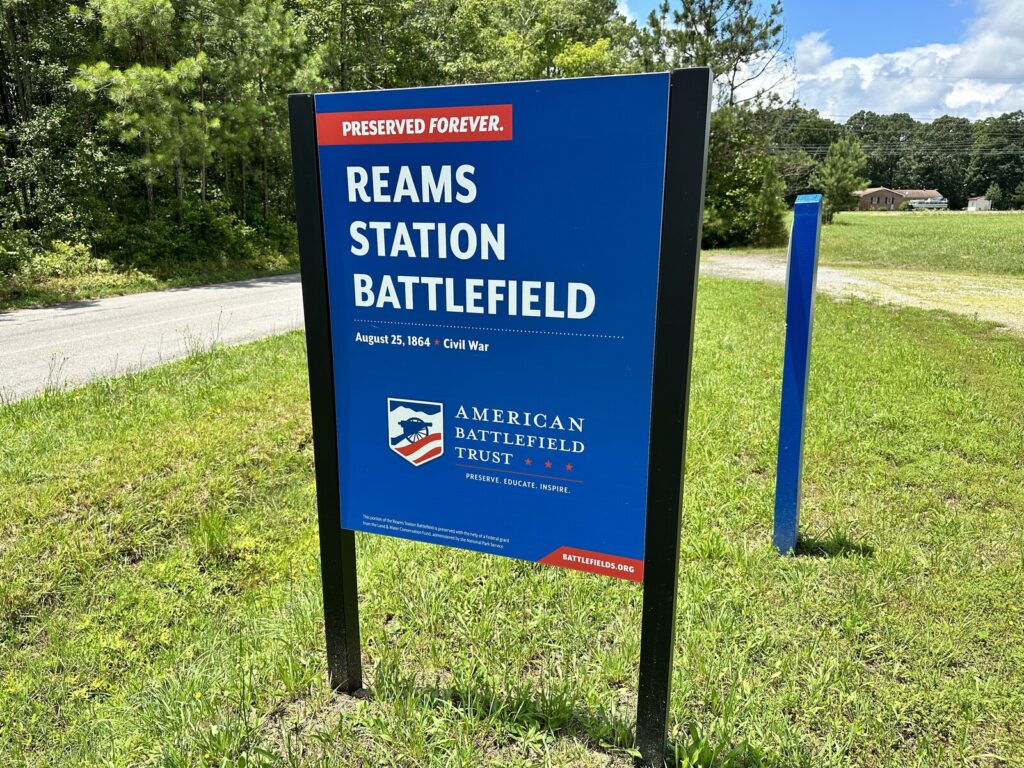
The American Battlefield Trust has a plot of land preserving a large chunk of the field. They have a short hiking trail marked out, and a few waysides.
Battle of Sappony Church – Civil War Battlefield #161
The cavalrymen of the Wilson-Kautz Raid were being pursued by rebel horsemen after their defeat at the Battle of Staunton River Bridge to the west. The Union boys were able to hold off the attacks here at the Battle of Sappony Church, but were forced to retreat to the north toward Ream’s Station, leading to a battle there the next day.
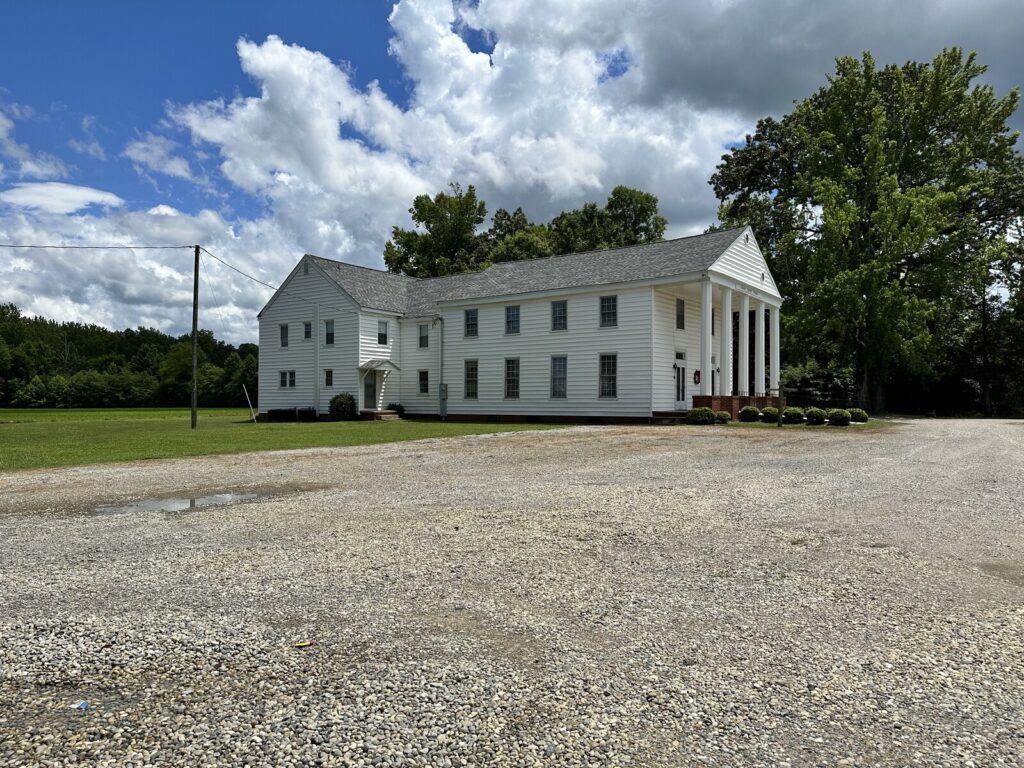
A wayside for this battle is in the parking lot of the Sappony Baptist Church.
So we were able to get to 9 battlefields on our first day – pretty good! It was now time for us to push south and head straight into the heart of secession – Charleston, SC!
Along the way, we stopped at the North Carolina Welcome Center and then I couldn’t resist taking my boys to South of the Border when we hit South Carolina. It was so much fun to see them experience an old-school roadside attraction like that. We went into the gift shop for a while and ended up leaving with bumper stickers.
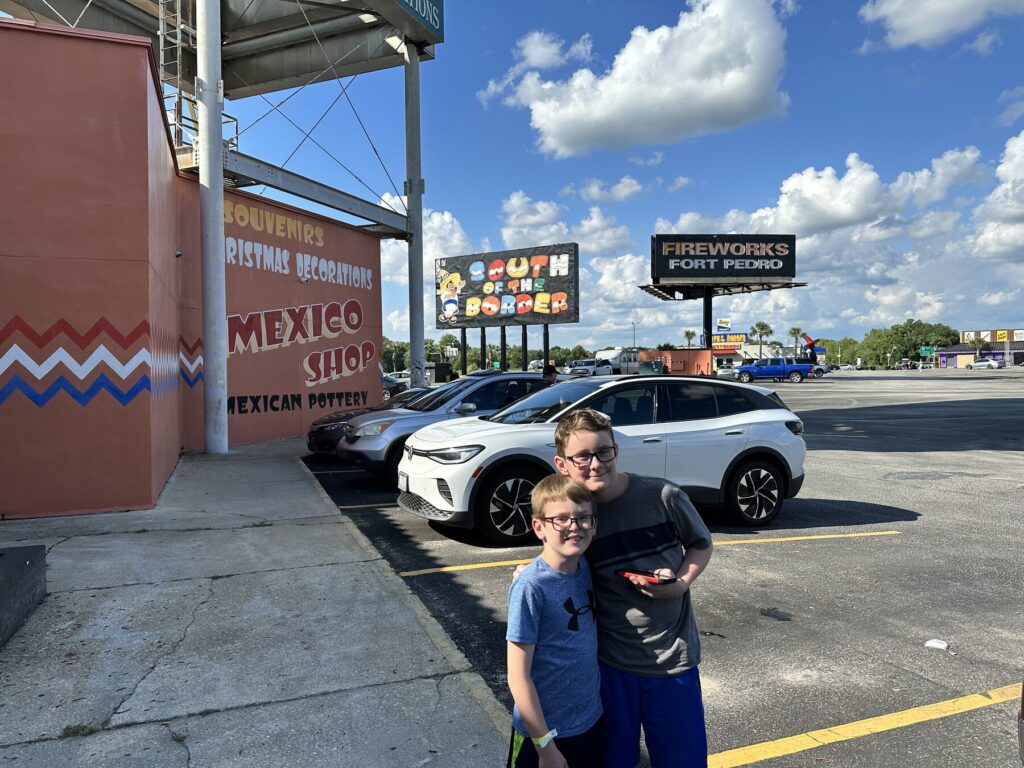
And these days, if you pass by a Buc-ee’s, you simply have to stop for dinner and gas. We made it down to our hotel in Charleston by 8:30pm and were all settled in for bedtime soon after.
